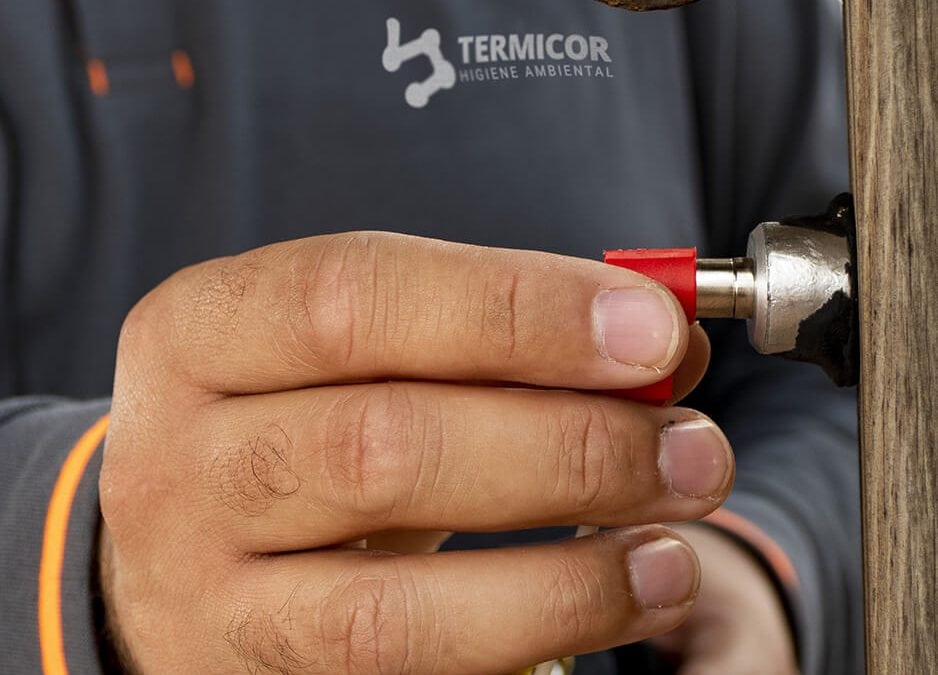Those damn bugs that we can find in our old furniture that we want to restore can be a present and future problem.
What bugs are attacking my furniture?
The best way to get rid of them is to identify them in order to apply the best possible treatment.
There are different types of xylophages (wood insects), each with its own characteristics. In some cases, these insects go unnoticed until it is too late, so prevention becomes our best ally. Link to request a quote for furniture or product maintenance.
Perhaps we have let a piece of furniture infested with bugs enter the house that look for food in other furniture in the house, or worse, in parts of the structure of our home.
But let’s not get doomsayers. Let’s keep seeing what we can expect from each of those damn bugs.
Adult individuals are not usually the ones who cause the most damage to our furniture. The larvae feed on the wood creating tunnels weakening the consistency of the wood.
How to identify our bugs
To identify these damn bugs it can be simple, in case you have an adult specimen, just compare it with a photo we have, but this is not usually the most common.
The larvae are very difficult to identify, and even more so if we are not experts in the field.
Types of wood insects
Those damn bugs have names and surnames. They are registered and we have their photographs.

Termites. Termites are considered the worst of these insects and a real pest. Maybe not because of their size, but because of the number of attacks, number of individuals… There are different types: wetwood termites, drywood termites, and subterranean termites. The habits and the way in which they attack wood are different.
One of the main problems posed by these wood bugs is that they are detected when there is no longer a solution. They flee from light, so they are not easy to see, and their presence is only evident when the wood has already crumbled or fallen apart, and sometimes due to an earthy trail stuck to the walls, ceilings or cornices.
They proliferate especially in humid and unventilated environments.
You have much more information here
Woodworm. It is the woodworm larva that actually eats a considerable amount of wood. It starts from within, so it is difficult to detect a woodworm infestation at first. It is the adult who finishes the hole and finally comes out. The most widespread types of woodworm in Spain are anobids, lictids and cerambycids. The remains they leave in their wake are known as quera.


Wood wasp. It is the most striking of these insects as it can measure up to 5 cm. The females deposit the larvae in the wood, and these, together with the help of fungi, digest it.
Weevil. Usually brown. The larva takes between 6 months and 1 year to transform (although it can be up to 3 years digging), during which time it feeds on the wood, usually rotten and wet.


Wood drill. Like woodworm, the borer deposits its eggs in cracks in the wood, and it is the larva that feeds on it. The insect is much larger than woodworm, although the main way to differentiate them is the type of hole it leaves in the wood. Instead of being round, it’s quite irregular.
Carpenter ants. Unlike the previous insects, the wood ant does not feed on wood, that is, it is not a xylophagous insect. However, we do believe that it should be on this list, since it bores it to make its nests.
Therefore, carpenter ants can also weaken structures made of this material by building their galleries, tunnels and nests.
They are much easier to identify than other insects. Not only because they have a relatively better known shape and color, but also because when digging they expel the shavings to the outside and because they need to come out to feed.

Treatments to get rid of them
The choice of product or treatment depends largely on the insect in question. When we know what insect it is and informing the professional of issues such as the size of the hole left by the insect, remains it leaves, possible larvae, etc., the appropriate product will be decided.
There are products that are used in a localized way, superficially, which can always be applied taking into account the manufacturer’s instructions. Or also under pressure, for which specific equipment is required and it is better to leave it in the hands of a professional.
When the infestation or infestation of wood insects is greater and cannot be treated locally, fumigation is necessary. A more expensive and aggressive method that aims to end the current infestation, but does not prevent future pests.
On some occasions, fumigation is used in a controlled manner and in closed spaces. It is usually one of the techniques used to kill wood insects in works of art, antiques, etc. In the specific case of termites, the most worrying insect, baits are working quite well (if you want to know more about this system click here).
Prevents, it’s much better
This is based on the maintenance of the wood, which although it is simple, having to do it periodically can be tiresome. It is based on preventing the wood from rotting, not only by renewing finishes, but also by preventing it from coming into contact with elements that facilitate the rotting process (directly with the earth, stagnant water…).
In addition, it is convenient to keep it clean and seamless. This will prevent some of these insects from being able to lay their eggs.
TERMICOR is a great option to get rid of those damn bugs.


